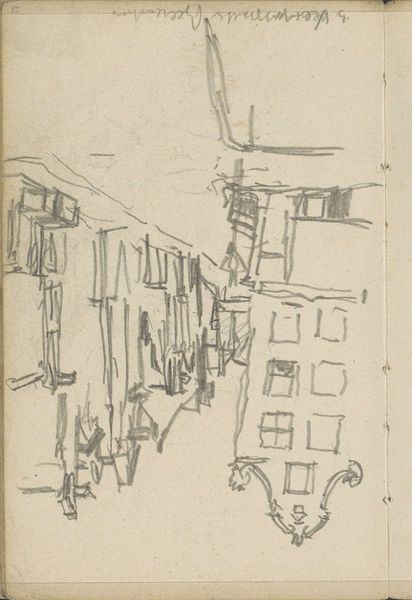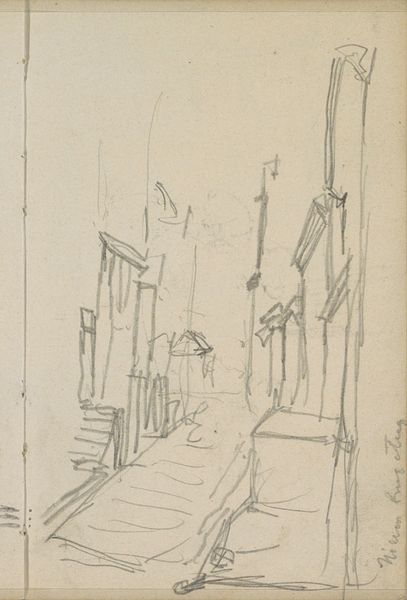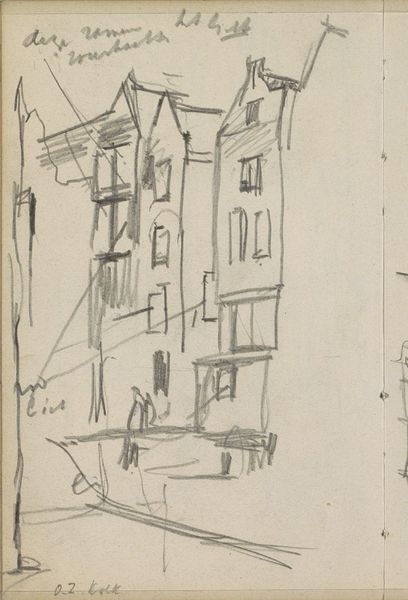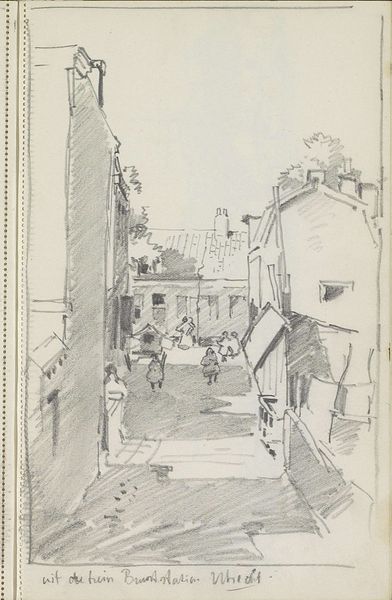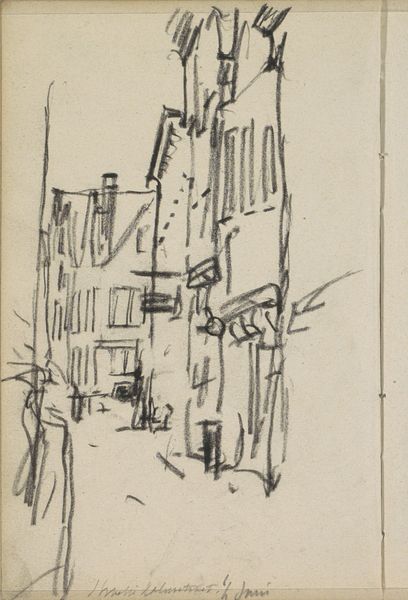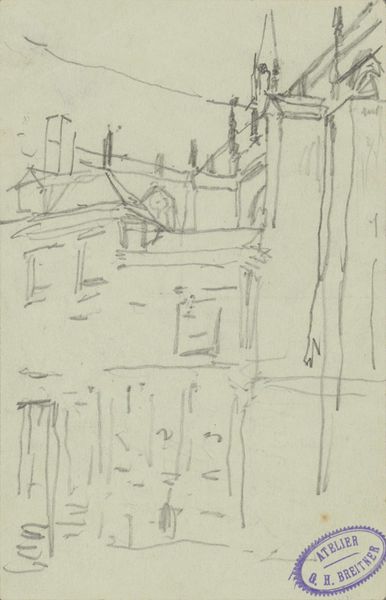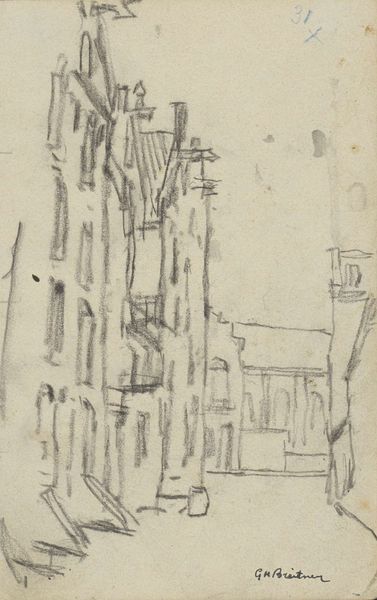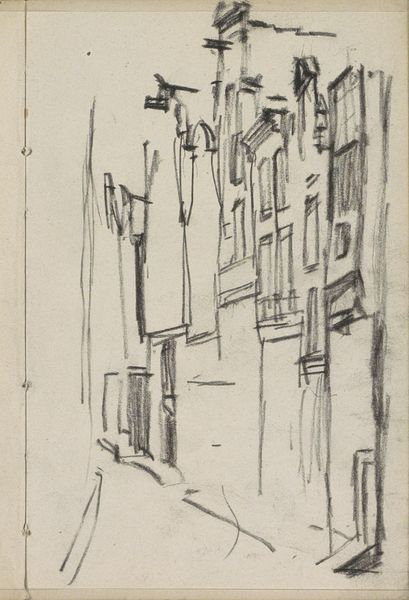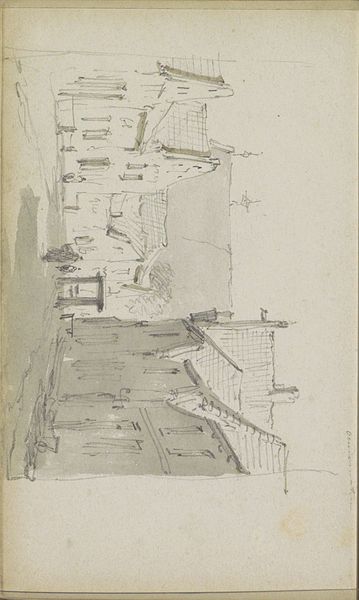
Copyright: Rijks Museum: Open Domain
Curator: Looking at this sketch, the lack of detail evokes a certain mood of loneliness amidst urban bustle. What’s your initial take? Editor: Yes, there's a starkness, an incomplete quality, isn't there? It feels ghostly. We are looking at "Gezicht op de noordzijde van het Spui te Amsterdam" by George Hendrik Breitner, circa 1903, a drawing rendered in pencil. The subject matter—the northern side of Spui in Amsterdam—suggests a narrative about place and the individual's experience within a rapidly modernizing urban landscape. Curator: Indeed. Notice how the repetitive, vertical pencil strokes dominate the composition, almost erasing the architectural details. It reveals a lot about Breitner's artistic choices – a move away from meticulous representation. This immediacy speaks to the value placed on the artist's hand and the raw physicality of the medium itself, defying expectations for highly polished work in painting from that period. The sketchbook becomes the final piece here. Editor: Absolutely. The unfinished quality pushes us to think about the conditions of production and reception too, namely, what was shown where, when, and to whom. These workers would've been facing harsh living conditions and social upheavals due to industrialization at the turn of the century. So the quick nature of this drawing—pencil rather than oils—could indicate his awareness of the urgency in the face of profound social change. How might their labour and lives intersect in the broader visual culture? Curator: Interesting to consider how the city itself is also undergoing transformation, with its canals and brick facades becoming a reflection of that industrial progression. Editor: Precisely. And perhaps Breitner, through this rapid impressionistic rendering, is seeking to capture something of that ephemerality. We must address, though, the politics involved. In these settings we can question how class, labor and urbanization create conditions of production that shape subjectivities. Curator: The sketch also exemplifies the artistic process in revealing materiality. Considering how impressionistic works are created is central. It helps in expanding conventional approaches to viewing this cityscape. Editor: Reflecting on Breitner's artistic rendering, one cannot help but see a starkly urgent glimpse of labor and place; a city—and its occupants—in constant flux. Curator: And that quick immediacy really challenges ideas about the role of materials in the final presentation and in interpreting place. Thank you.
Comments
No comments
Be the first to comment and join the conversation on the ultimate creative platform.

